Welcome to WebEngage! You’re now one step closer to becoming a Retention champion! Please press play to listen to the audio version of the blog.
A 5% reduction in customer churn can result in revenue savings of up to 85%! So if you haven’t already, it’s time you started focusing on finding ways to reduce the churn rate. For the uninitiated, imagine this:
You notice that you’ve been getting new customers every day. However, your revenues are dwindling, and profits are at an all-time low. On further inquiry from behaviour analytics, you get to know that while new customers are coming aboard, more customers are wafting out of the metaphorical door.
In technical terms, we call this the ‘churn rate.’
At this point, it’s only natural to wonder: “What is churn rate, and how do you reduce it?”
Churn rate – or the rate of attrition/defection/turnover – refers to the percentage of users who stop using a product/service within a specific time period. In order for a business to sustain itself, the math dictates that the number of new users should be greater than the number of users who leave.
Where churn rate is just about the number of individuals who move out of a collective bunch over a particular period, let us further learn more specifically about how to reduce Customer Churn Rate below.
In this article you’ll learn:
- What is customer churn rate?
- How is customer churn rate calculated?
- Top 5 time-tested strategies to reduce your customer churn rate
-
- Focus on delivering a seamless onboarding experience
- Leverage technology to provide a personalized experience
- Identify and diagnose factors that cause churn
- Build a community around your product which strengthens the brand-customer relationship
- Provide ‘real value’ that motivates customers to come back
-
- Wrapping Up: Reducing customer churn rate should be every company’s priority and core value
What is customer churn rate?
Customer churn rate represents the percentage of existing customers who disengage/discontinue with a brand in a specific time period (monthly, quarterly, etc.). Disengagement contributors could include (but are not limited to):
- Subscription cancelation
- Non-renewal of a contract/service agreement
- Account closure
- Customers shopping from competitors
How is customer churn rate calculated?
There are numerous ways to calculate the customer churn rate, depending on the criteria you choose. Let’s look at the different formulas available:
The most widely used formula for calculating churn rate:

The learning: No matter how many new customers engage with your brand, if you aren’t retaining your existing customers, your business will be in trouble. Think of it as a mud pot with a hole at the bottom; no matter how much water you pour in, the pot will never be full.
Moral of the story?
The more the customer churn, the more it’ll negatively impact your business growth. Churn rate is vital for the sustainability of a business and contributes to continuous profit and growth.
Another question that’s commonly asked in the CX circles is this:
Why is acquiring new customers a disadvantage than retaining the existing ones?
Well, acquiring new customers may seem relatively easier from a marketing and sales standpoint. However, retaining an existing customer seems like a sound business choice. Here’s what the data tells us:
- Cost-Effective: According to the Harvard Business Review, acquiring a new customer is 5-25x costlier than retaining an existing customer.
- All-Round Growth: Furthermore, it has been seen that enhancing retention leads to a 2-4x greater impact on growth than acquisition.
- Increased Profitability: As per research by Bain & Co., lowering churn by 5% can increase profits by 25-95%.
- Sales Boost: The icing on the cake, Invespcro claims that “The probability of selling to an existing customer is 60-70%, but only 5-20% for a prospect.
The learning: Needless to say, redirecting – and prioritizing – your efforts to reduce the customer churn rate and retaining existing customers (instead of solely acquiring new ones) makes business and logical sense.
Moving on, let’s look at the top strategies and tips that can reduce your churn rate to a minimum.
Top 5 time-tested strategies to reduce your customer churn rate
1. Focus on delivering a seamless onboarding experience
A seamless and logical onboarding experience can leave your customers with a lasting ‘first impression’ of your brand. Let’s look at a real-life example to understand this better.
Top tips to enhance onboarding:
a. Engage customers prior to day one
Take a look at the onboarding experience provided by “Box,” which starts with a quick sign-up form and highlights the main benefits of using the free trial option (acting as a refresher course in the user’s mind):
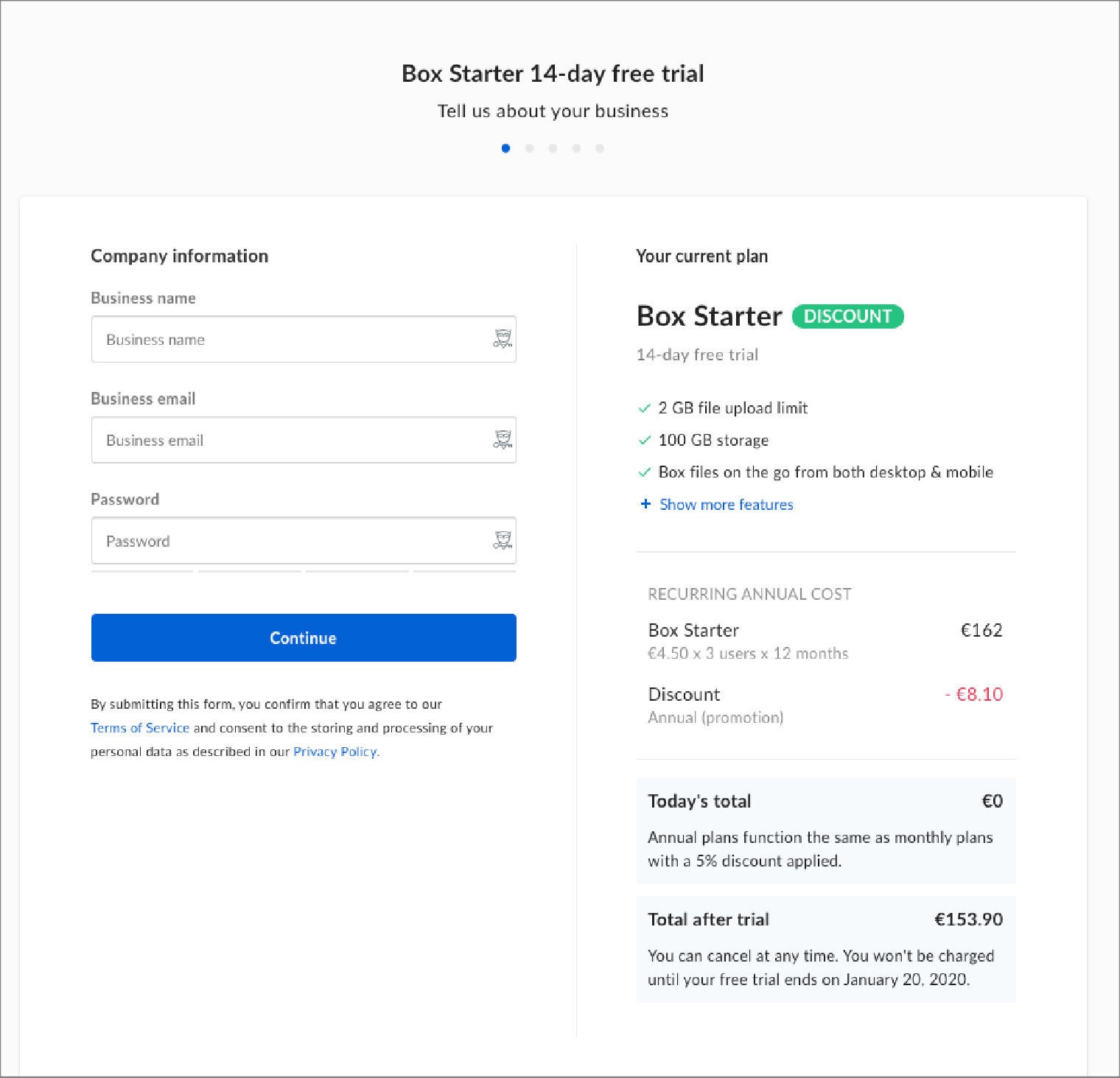
However, it is in the next series of steps that the brand’s onboarding journey takes the cake. Instead of leaving new users in the dark on how to proceed, it showcases a “Welcome to Box” PDF which entails a brief product tour and highlights how the product functions, and explains its benefits:

Another example of a brand that offers an exceptional onboarding experience is Snapp, the largest and fastest-growing internet company in the middle east. Once the user downloads the Snapp App, the brand sends out personalized communication to its users to encourage them to sign up and avail of its services.
The learning: The brand makes excellent use of empty states by rolling out useful and practical content in the form of a welcome pdf. How does this help? Basically, the brand guides new users and compels them to take action through the free time between the critical ‘Sign-up to first use’ process (also known as the ’empty state’) instead of leaving them lost and confused on how to proceed.
b. Greet Customers With Honesty & Excitement
Airtable welcomes new customers with much gusto and zeal:
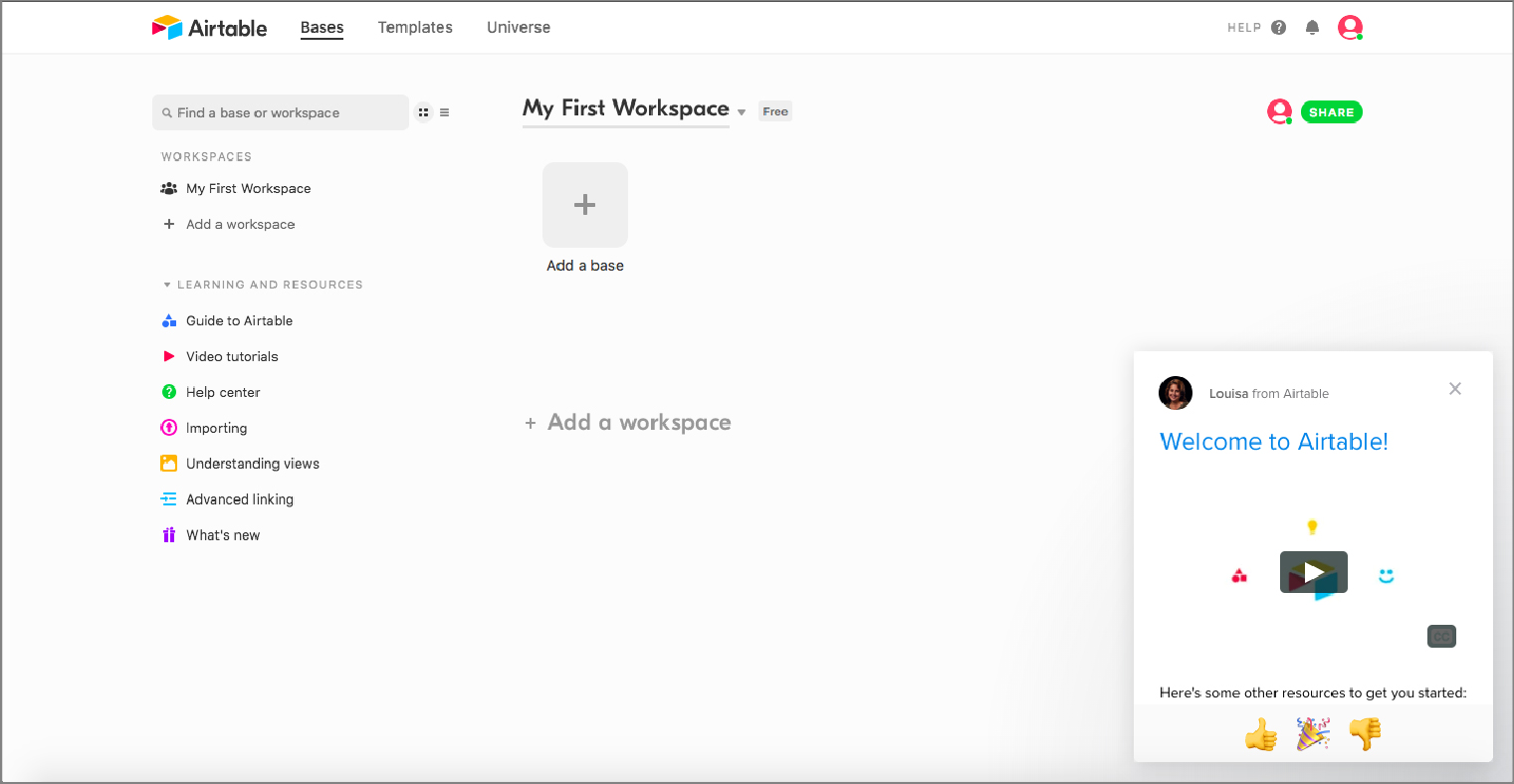
Notice how the brand makes use of ‘familiar’ emoticons in the live chat section to engage users in an interactive manner.
c. Implement Frequent Check-Ins And Feedback Sessions
Feedier’s onboarding journey combines the power of integrating feedback touchpoints (and rewarding users in the process) with self-help videos at every important junction in the onboarding process:
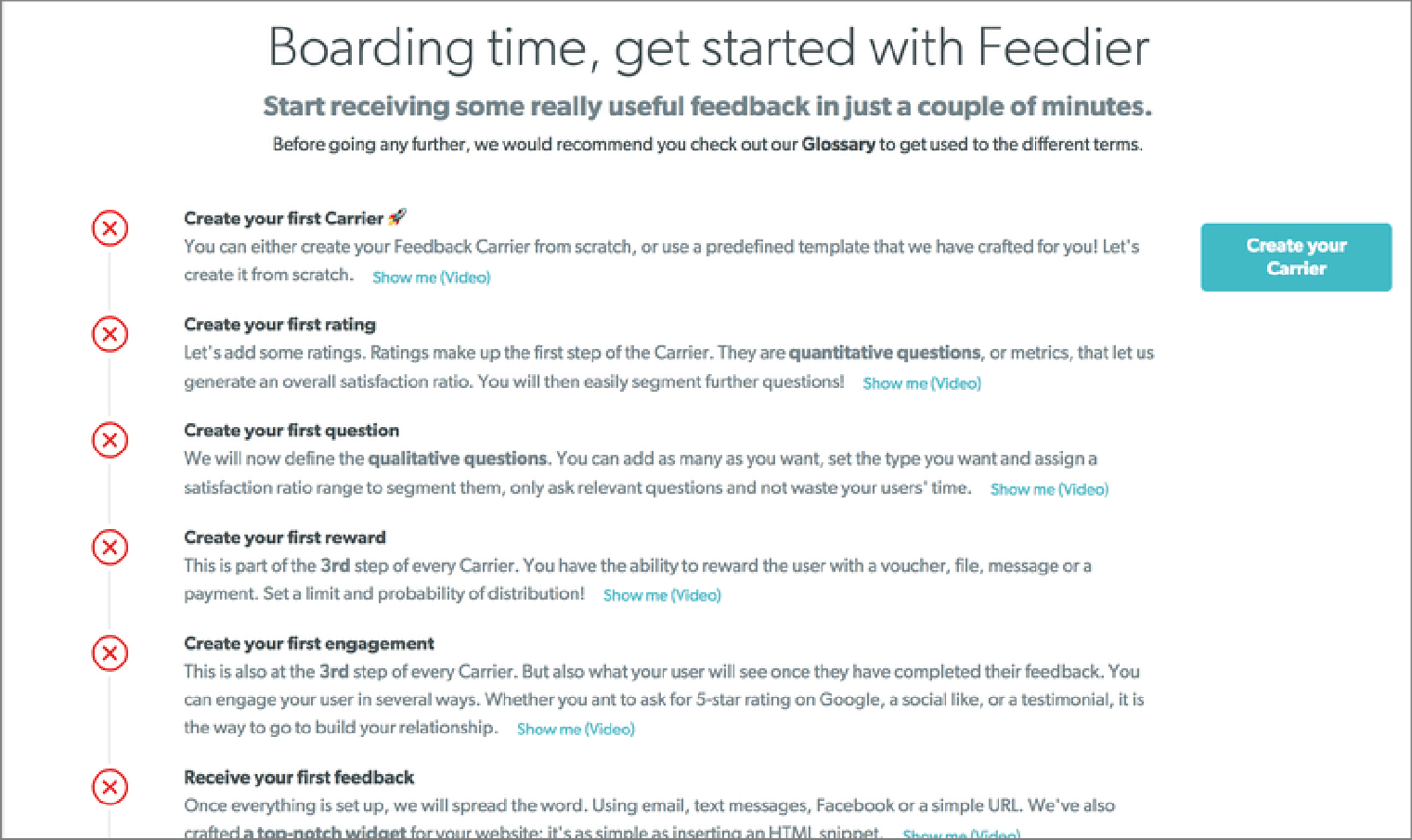
It also aids in email marketing. It also aids in email marketing. The brand also sends personalized emails asking customers about where they might be facing any issues and outlining useful resources which the users can view to get self-help:
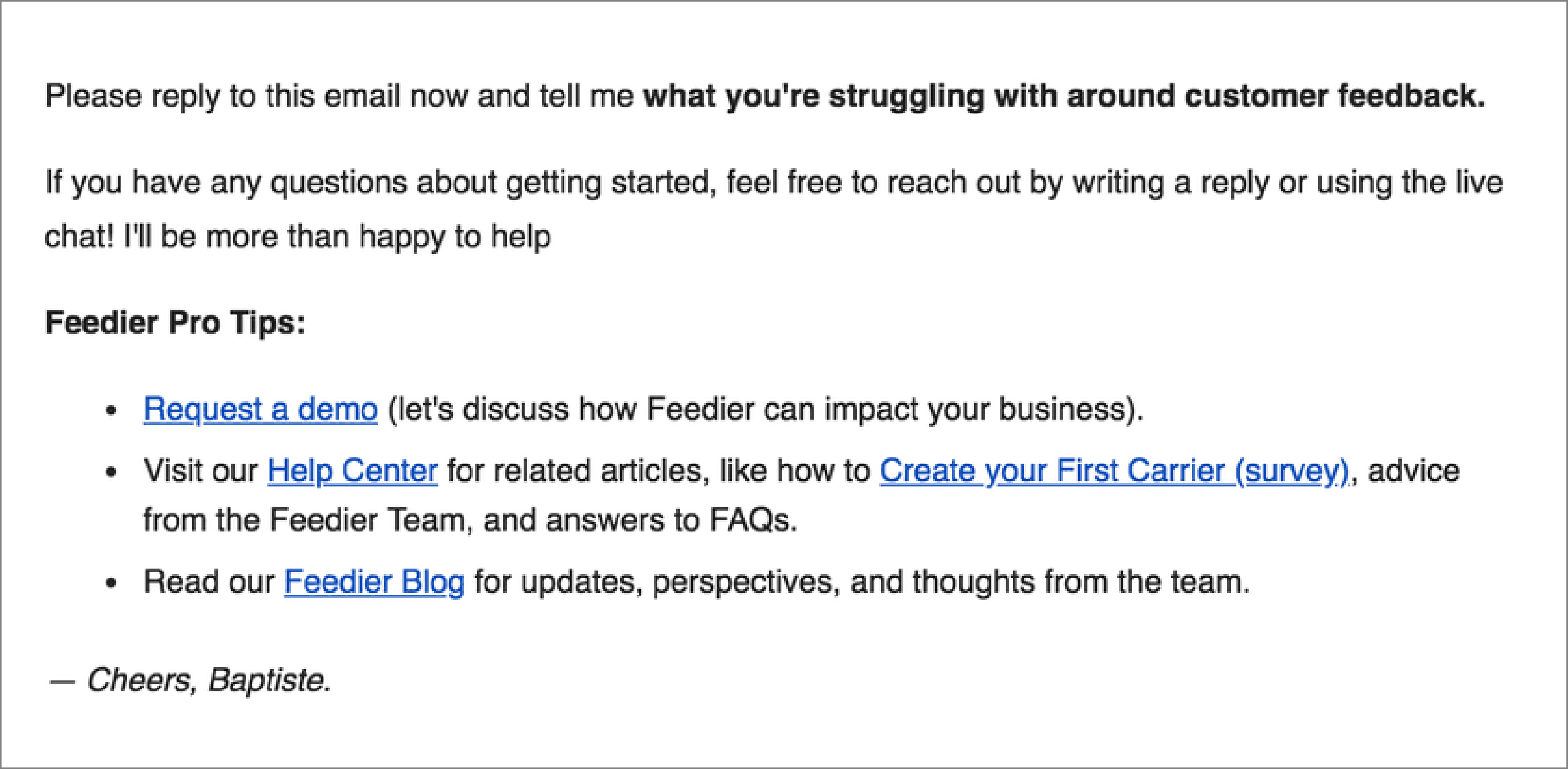
The learning: A rock-solid onboarding program lays the foundation for a seamless customer experience. It helps induct new users into the company’s culture in a useful and positive manner. Moreover, customers get a glimpse into the company’s ethos and can extract ‘real value’ early on in their customer journey, encouraging them to come back for more.
2. Leverage technology to provide a personalized experience
Reducing your churn rate is all about making the customer experience frictionless, streamlined, quick, and efficient – all of which are specialties to technologies and tools such as:
a. Live Chat:
If you wish to provide proactive and personalized support to your users, you need to integrate the live chat functionality into your website/app as Bulb does:

Other ways in which live chat can help:
- Allows you to re-engage with customers using the auto-messaging functionality and keeps the communication alive (quite literally).
- Enables you to roll out feedback surveys and monitor customer satisfaction levels.
- Allows you to establish a rapport with the customers and foster customer loyalty as using live chat, you can address questions instantly and 24×7, guide users if they’re stuck on the website, and offer personalized help all the way through.
b. Co-browse:
The co-browsing feature brings together your customer and the customer agent on the same page (or in this case, the screen) so that the latter can troubleshoot issues collaboratively and deliver a personalized experience using visual cues.
As you can imagine, this helps build customer trust and loyalty.
c. Chatbots:
Chatbots are fully automated tools that can address 80% of the routine, repetitive questions, and speed up customer response times. This frees up invaluable agent time who can then focus on solving customer issues that require the expertise of the ‘human mind.’
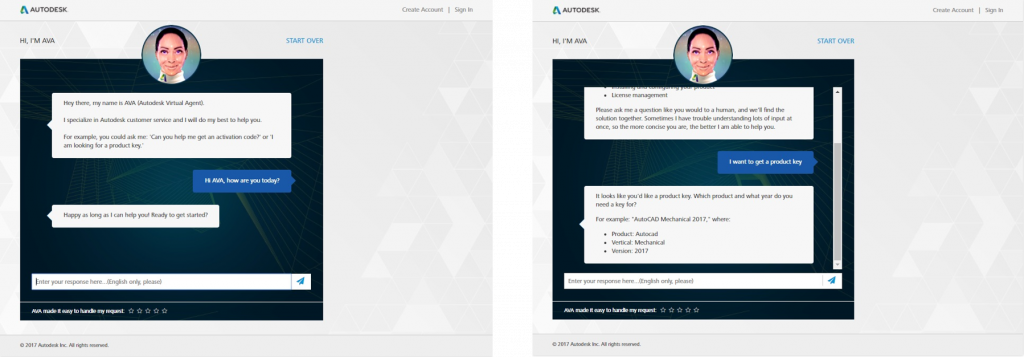
All in all, if you wish to boost productivity and agent performance, you need to go the chatbot route and leverage the most of this multi-tasking tool.
d. Knowledge Base:
Customers today want brands to offer self-help options so that they can address the issues themselves instead of wasting time waiting for an agent. Take a look at Asana’s self-help options, which are strategically categorized into three important types of inquiries: the basics (Getting Started), the multiple functionalities (Onboard My Team), and leadership tips (Expand with Asana). On clicking Getting Started, you can see the following menu:
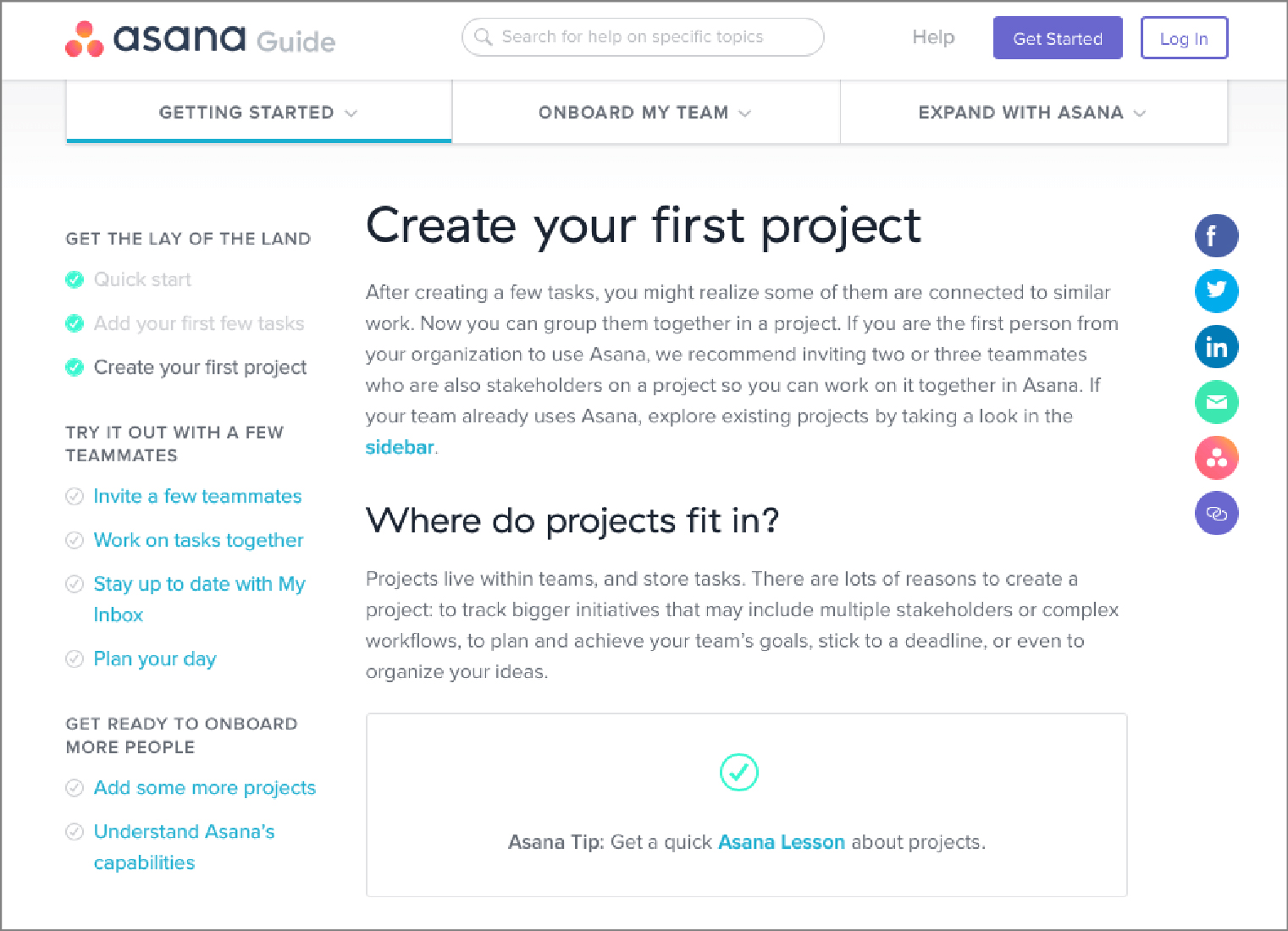
Undoubtedly, this knowledge base is as detailed and comprehensive as they come; and can be considered as a best practice.
3. Identify and diagnose factors that cause churn
This one’s a no-brainer. In order to reduce customer churn, you’ll first need to identify the pain points and analyze the information gathered to outline the next steps. Here’s what you should be doing:
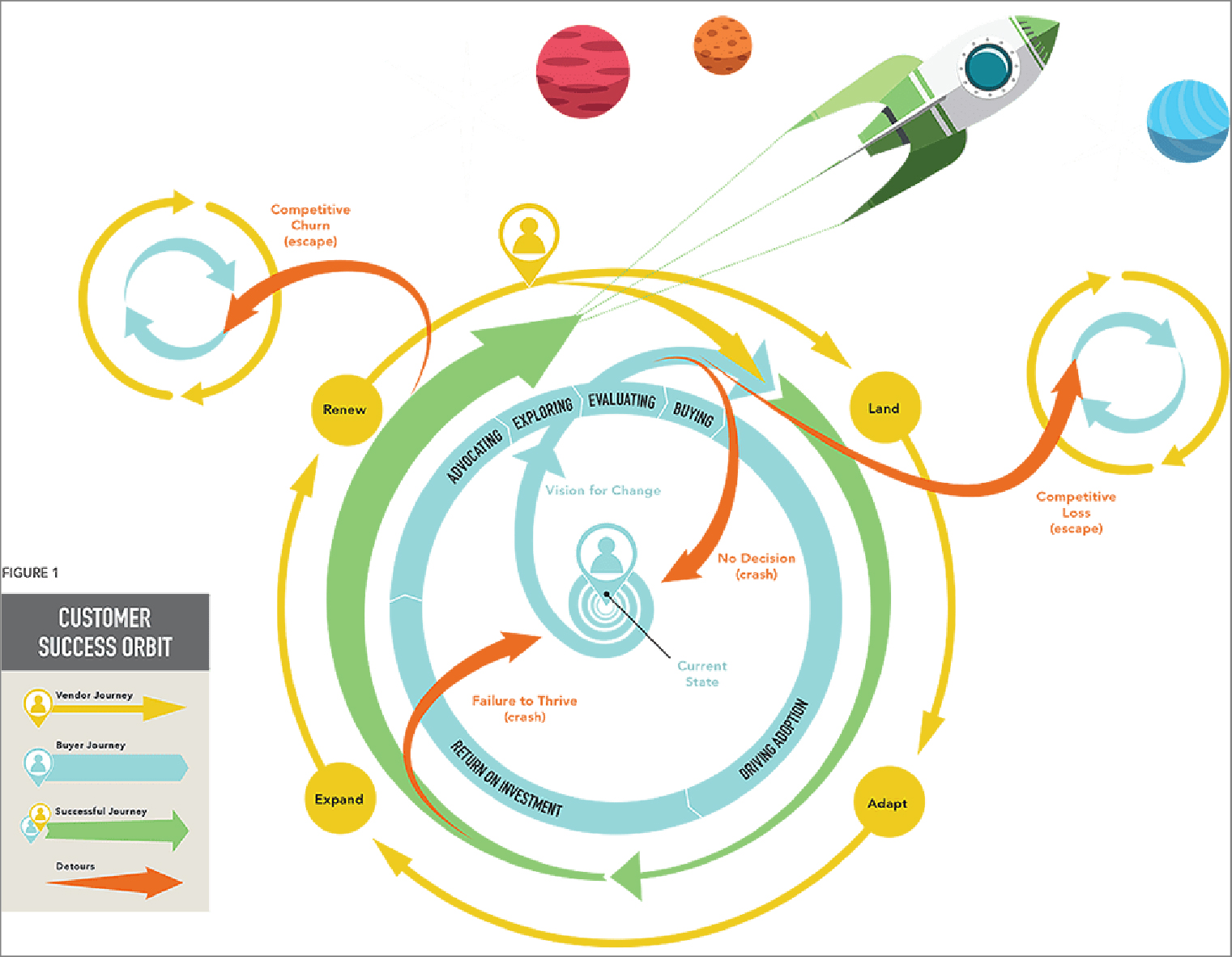
a. Map out and study your buyer’s journey, which comprises four key stages:
- Land: This stage involves activities and efforts that typically ‘introduce’ the brand to a prospective customer.
- Adopt: In this stage, the end goal is to demonstrate to your new customers how they can use your product/service to achieve their goals.
- Expand: Here, the central idea is to educate and inform your prospects about added benefits and incentives they can leverage with your product/service.
- Renew: The final stage includes analyzing the true value and potential of the product/service in question to further determine if it makes business as well as financial sense to continue the relationship.
Understand where your customer lies amongst these four stages.
b. Understand the factors that may be causing customer churn. In other words, get a pulse of where your churn may be originating.
Here are a few examples outlined below(this is not an exhaustive list):
- Inability to provide value to your customer and deliver on the customer’s needs.
- A complex product/service and a difficult onboarding process.
- A dynamic shift in customer needs making the solution obsolete.
- Unorganized and inconsistent support to the user.
- Low funding
c. Review the data and drive discussions on what’s working and what’s not.
For your convenience, here are some effective tools and strategies you can use to diagnose the causes of churn:
- Customer Feedback Calls: You can gather customer feedback via calls in real-time to understand how your brand is placed in the customer’s mind. This method is faster and more effective than asking customers to ‘fill’ feedback surveys.
- Personalized Feedback Email: This strategy works wonders if you integrate personalized incentives with feedback gathering tools such as surveys. Take a look at the following personalized email by Moosejaw that takes gathering feedback seriously – so much so that the brand offers an incentive to the customer in exchange for honest feedback:
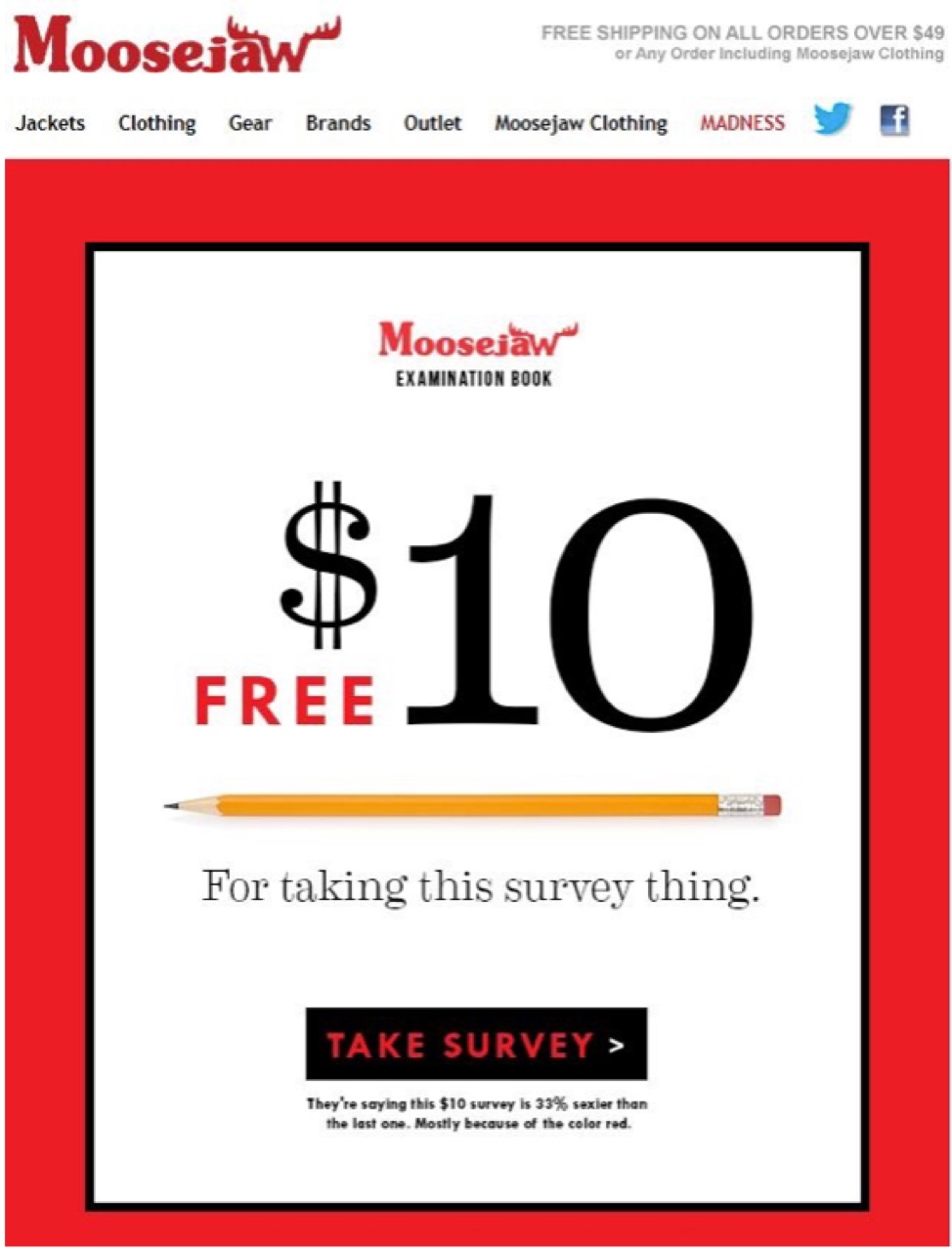
- Customer Exit Feedback Survey: Customers who choose to shift to another brand can offer valuable insights into where your brand went wrong. Hence, conducting exit feedback surveys is an absolute must:

4. Build a community around your product that strengthens the brand-customer relationship
Humans are social beings who love being a part of any community. This is why your brand needs to create an active and engaged community around your offering so that customers feel that they’re an integral part of the brand. Here are the benefits of an engaged online brand community:
- Livens and diversifies your blog content by allowing you to run rich and informative guest posts.
- Allows the users to connect with the brand in various capacities (such as user-generated content). This fuels growth as well as establishes positive word-of-mouth publicity.
- Offers the opportunity to drive conversations relating to the offering, helps troubleshoot for issues quickly through a centralized and active discussion board, and acts as a platform that entertains and educates users, all at the same time.
Take the Starbucks “My Starbucks Idea” for example which provides an active forum to customers so that they can share and discuss ideas as well provide feedback about their Starbucks experience. This kind of community-driven, collaborative environment brings about a shared sense of understanding among the customers and makes them feel valued and appreciated by the brand. The more often your customers see their ideas put into action, the more engaged and loyal they’ll remain to the brand.
- Helps the brand engage in quality network-building activities and connect with industry experts.

5. Provide ‘Real Value’ that motivates customers to come back
Did you know?
As per research, a staggering 80% of a company’s future revenue is based on the value that’s extracted by the user’s post-purchase.
All things said and done, what matters the most is how your brand maintains the quality of the value you provide through your product/service. Here are some useful tips to get you on the right track:
- Work on gathering consistent and real-time feedback.
- Bring innovation in design (through the thorough market and user research) and then flaunt about it as Slack does:
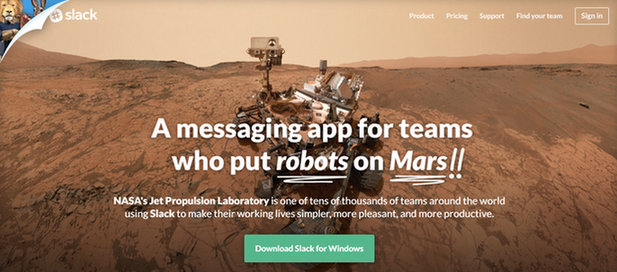
- Introduce new complementary products and services to drive sales and revenues.
- Always pitch towards educating your users about the true value of your product/service in as explicit and simple a manner as possible (as Uber demonstrates below):
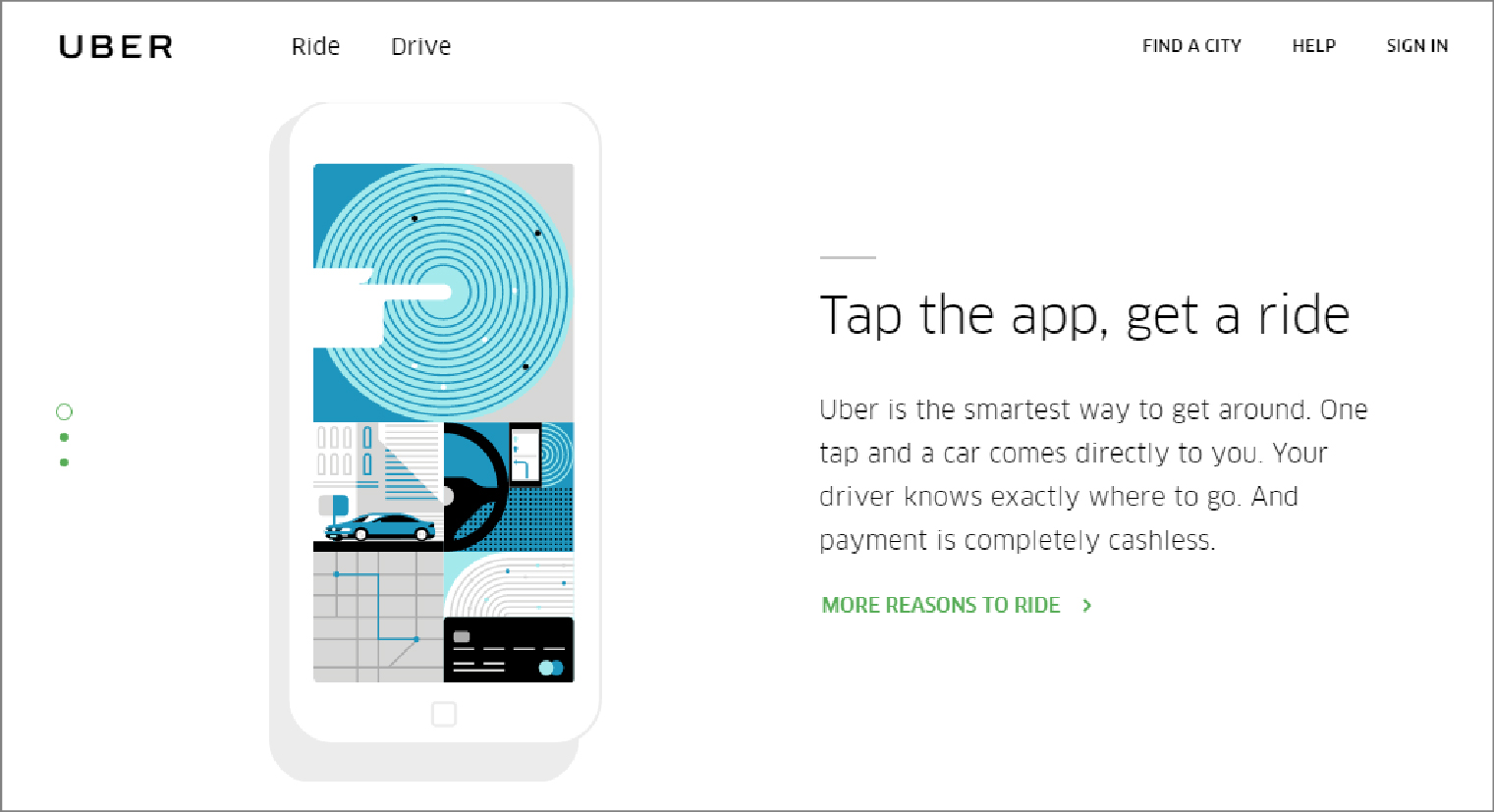
Eventually, as the trust builds, you’ll notice your customers turning into self-confessed brand advocates.
- Gather relevant metrics and data to demonstrate to your customers how your offering is benefiting the customer’s business. Regular updates on progress and performance can drive honest and open customer-client relationships – a priceless asset if you ask us!
“Maintaining a strong brand means striking the right balance between continuity and change.” – Harvard Business Review
Wrapping Up: Reducing customer churn rate should be every company’s priority and core value
Customer churn is inevitable and can put your business growth in jeopardy. Every company has to face it. The only thing that differs is the degree to which it impacts your growth. Your churn rate depends on various factors such as the quality of customer service, the functionalities and benefits of the offering, the type and needs of the customer base, and so on.
To wrap up, for long-term customer success and an ever-growing user base, follow these five winning strategies and put your customer churn concerns to rest:
- Focus on delivering a seamless onboarding experience.
- Leverage technology to provide a personalized experience.
- Identify and diagnose factors that cause churn in the first place.
- Build a community around your product, which strengthens the relationship between a brand and a user.
- Provide real value that encourages customers to return.
We would love to hear your take on these strategies. Also, what different strategies have you got your hands-on in order to reduce your customer churn rate?
Bonus Read – 17 Customer Retention Metrics You Need To Track































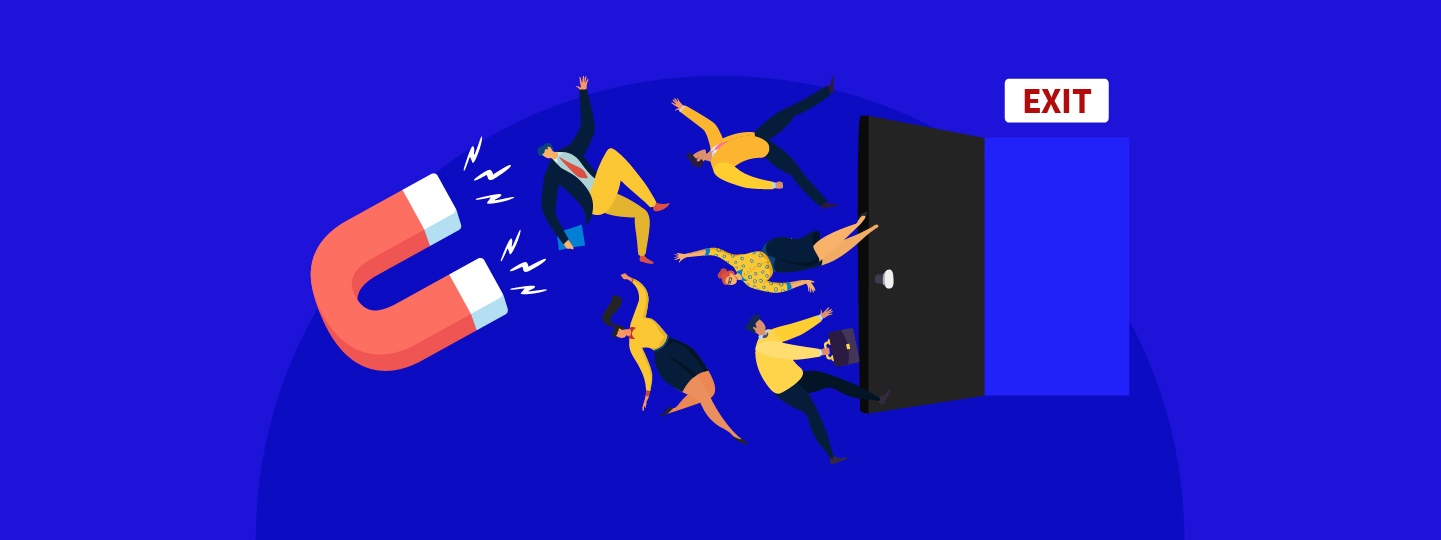


 Diksha Dwivedi
Diksha Dwivedi
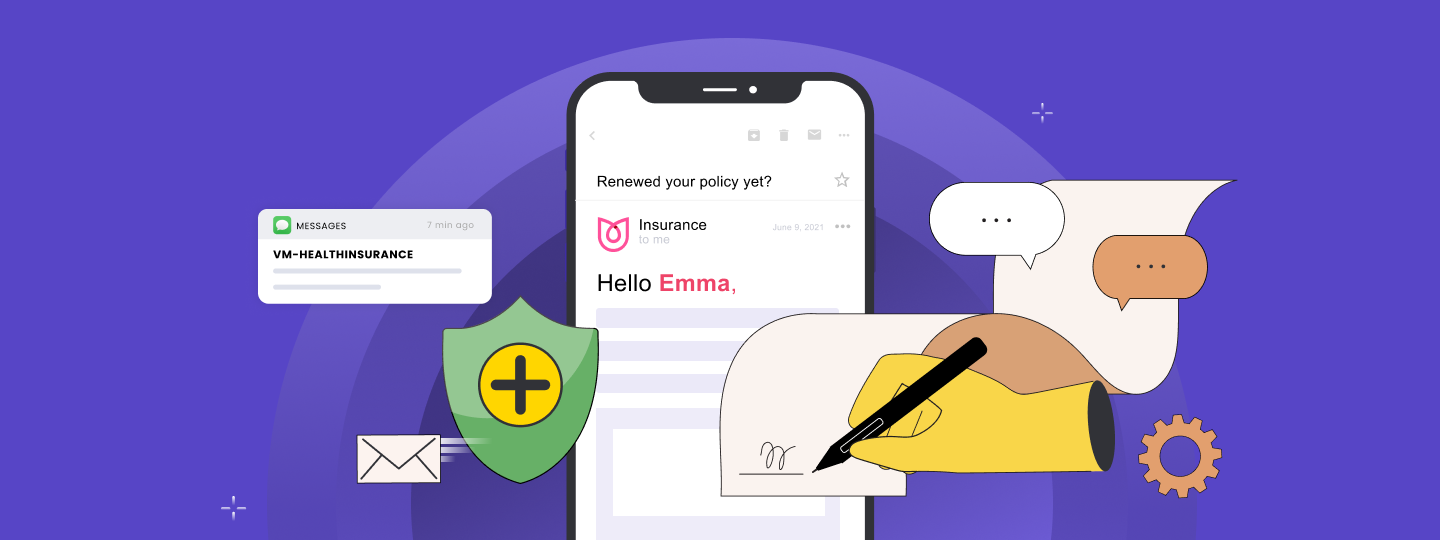
 Vanhishikha Bhargava
Vanhishikha Bhargava



